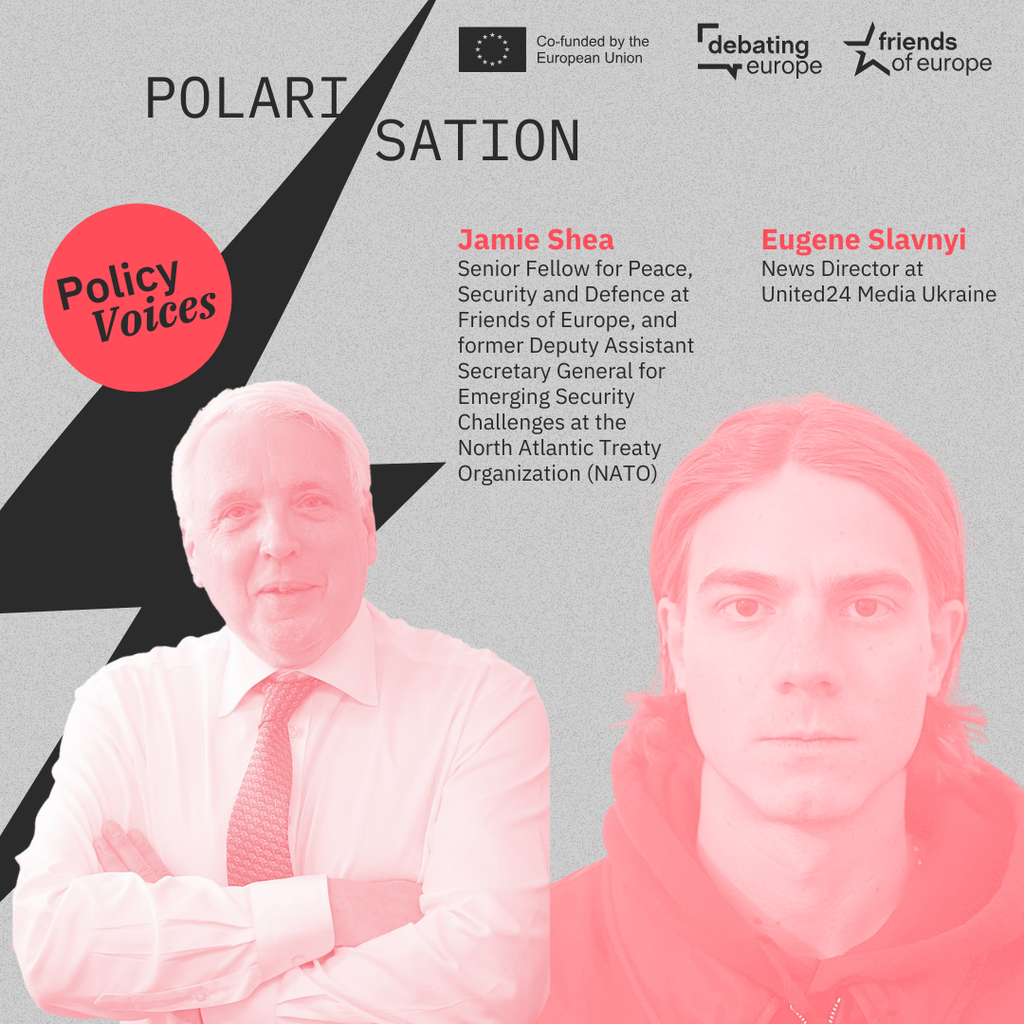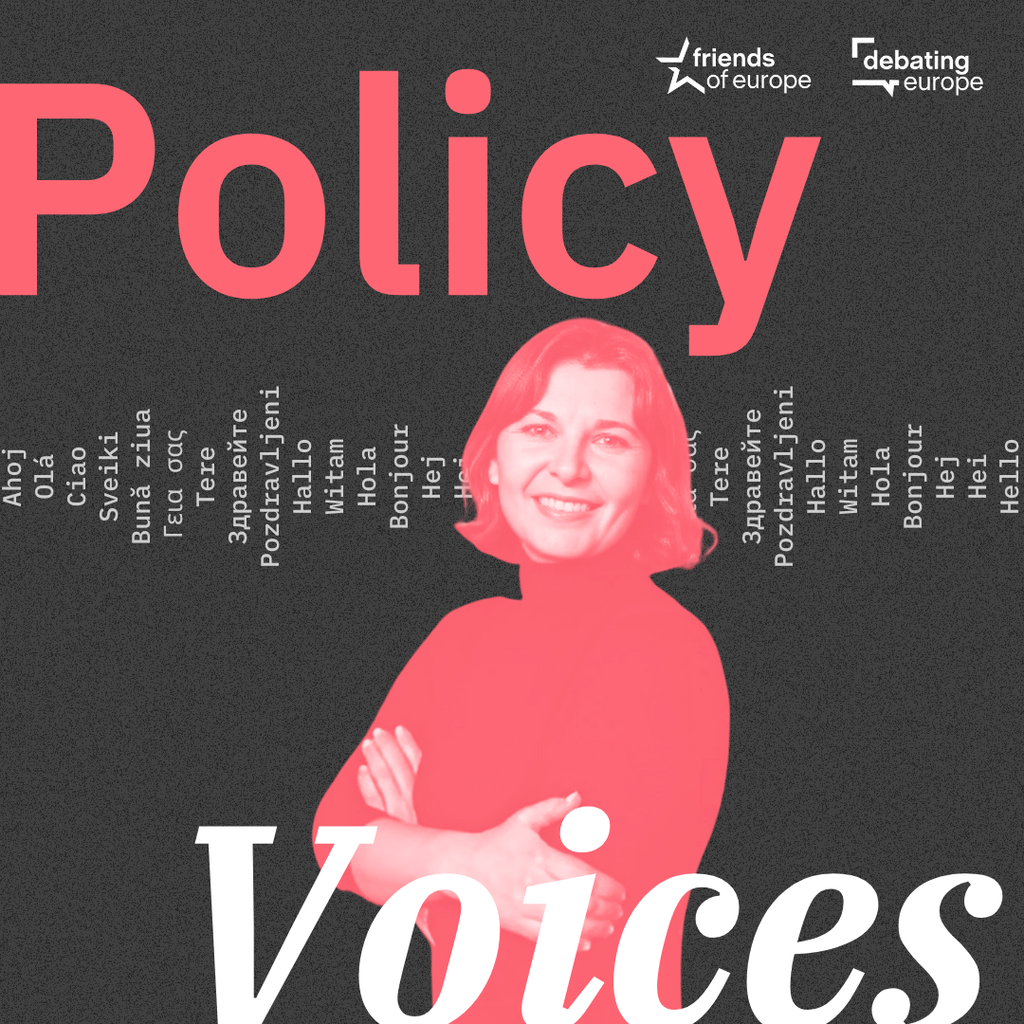From ambition to action: building Europe’s Defence Union
Past event In person

- Area of Expertise
- Peace, Security & Defence
Peace, Security & Defence
Discussion of Europe’s future tends to highlight two competing claims. There’s the western view that the actions of Russia on the international stage demonstrate Moscow’s post-imperial syndrome, and are in breach of Russia’s legal obligations, notably the Helsinki Accords, the Paris Charter and Budapest memorandum. The view of Russians, on the other hand, is that the blame for the present situation lies in NATO’s own breaches of its informal but frequently repeated declarations that it would never expand eastwards and that there would be no western interference in the “internal affairs” of countries there.
A second Russian narrative is that the U.S. wants to prevent any Russian rapprochement with countries of the European Union, and in particular with Germany. Events in Ukraine have clearly shown that Moscow believes the so-called “colour revolutions” were initiated by the West, and predominantly by America, to further their own interests, and that the same technique is being used to bring about regime change in Russia.
In short, Europe and Russia are now estranged. But their estrangement isn’t in the long-term interest of either side. That said, improving relations could take a long time, for neither in Russia nor in Europe and the United States will it be a quick and easy matter to change course and reverse the current trend.
Many experts hold the view that influential forces in Europe, primarily in Germany but supported in France too, are ready to make an effort to de-escalate the current state of tension
The attempts now under way to create a new European security system will not be crowned overnight with success, but just as was the case at the time of the Helsinki process, they could serve as the first steps towards achieving a settlement. Bringing to an end the military confrontation in Ukraine and dealing with the country’s economic collapse will demand solutions that inevitably involve co-operation. Playing games to see whose nerve will crack first, or who will run out of resources, will only increase the risk of an uncontrollable reaction. There is therefore no alternative to seeking joint continent-wide solutions.
Preparatory work for the development of such solutions should include the following steps:
In terms of the first of these points, it must be recognised that since 1975 there have been numerous changes to the system of security and co-operation. We therefore need to review or clarify approaches towards such issues as territorial integrity, the inviolability of borders, the activities and extent of security alliances, the nature of conflict and the development of new systems of integration. Contradictions that might arise between policies based on general principles and those based on national interest should be examined, not least because of the ways the world has changed in the wake of events in Yugoslavia, Kosovo, Abkhazia and Ossetia, and now Crimea.
As for the common European economic space, it had been created de facto in the years before sanctions were imposed. One can readily list the successful initiatives undertaken before the present crisis, for instance the Russia-EU programme of partnership for modernisation and various multi-lateral and bi-lateral agreements covering trade, finance, energy and technology.
Broadening these discussions to include potential joint activities between the European Union and the Eurasian Economic Union for developing the Ukrainian economy could help to turn conflict into co-operation. The inevitability of such joint actions is obvious: a failed state with a population of 43m in the centre of Eastern Europe and bordering both Russia and the EU is clearly highly dangerous for everyone. Neither side can solve these problems on their own. Co-operation between the EU and the Eurasian Economic Union followed by the involvement of the U.S. and China in the solution is the most favourable way out of the current situation.
Most observers believe that the United States should not stand in the way of a political solution to the Ukrainian conflict, and there are already encouraging signs. The visit to Moscow in May of U.S. Deputy Secretary of State Victoria Nuland led to the announcement by Russian Deputy Foreign Minister Gregory Karasin that a bi-lateral dialogue on this issue has begun and a number of working groups have been established.
Turning to the issue of how to re-create a common security space, it is clear that a priority is that as a first step following an ending of acute confrontation in eastern Ukraine, ministerial meetings should be re-established and the Russia-NATO council restored, possibly with changes to its rules and procedures. As a result of the Georgian crisis of 2008, the work of this council was frozen as a ‘punishment’ of Russia. The Ukrainian crisis resulted in an even deeper freezing of the Council, something which makes no sense at all since one of the Council’s main objectives is the prevention and resolution of conflicts.
The attempts now under way to create a new European security system will not be crowned overnight with success, but just as was the case at the time of the Helsinki process, they could serve as the first steps towards achieving a settlement
During the presidency of Dmitri Medvedev, who incidentally played a constructive role during NATO’s Lisbon summit of 2010, there were more than 600 joint activities involving military co-operation between the Russian Federation and the North Atlantic alliance. As we in Russia recall, this co-operation even extended to joint manoeuvres. In this sense, historical memory and experience still exists, and nothing fatal has yet happened in this crisis.
To prevent military bravado on both sides escalating into violence, contact must be re-established as quickly as possible to prevent incidents on land, sea and air. The fact that military contacts between Russia and America took place last spring after a hiatus of one and a half years was good news, and any moves to create further contacts between NATO and Russian military leaders is to be welcomed. On a number of occasions, proposals have been made to open negotiations on a multi-lateral agreement to avoid military incidents between Russia and NATO, possibly to include Sweden and Finland. They should plainly be pursued.
Building trust, transparency and predictability in the military sphere; fighting terrorism together; arms control and disarmament; the future of the Arctic; reaching a settlement in Syria – these are just some of the outstanding issues that need to be settled in a multi-lateral format.
Many experts hold the view that influential forces in Europe, primarily in Germany but supported in France too, are ready to make an effort to de-escalate the current state of tension. The Panel of Eminent Persons, led by Wolfgang Ischinger under the auspices of the OSCE, is working in that direction, and given this it would make sense to make use of this single organisation because it is broadly inclusive, has a mandate to operate in Ukraine and can negotiate on a continental scale. Preparations can be made under Serbia’s current OSCE presidency to expand its peacekeeping mission and intensify its fieldwork in eastern Ukraine. Next year, when it will be under German presidency, these preparations can be implemented and the results brought before an OSCE summit in late 2016 or early 2017. What we now need is for civil society organisations in EU countries and Russia, along with influential non-governmental and business organisations to work together to assist this process.
Past event In person

Next event

Past event Online

Past event Online





Stay informed
We use cookies and similar technologies to adjust your preferences, analyze traffic and measure the effectiveness of our campaigns. Learn more about our privacy policy.